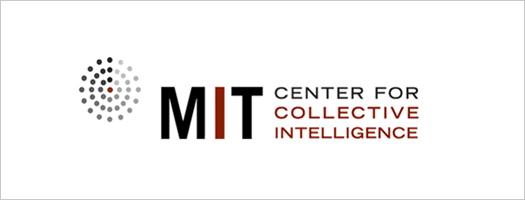Our Story
Peter Gloor, the founder of Galaxy Sciences, has been at the forefront of behavioural data science and the application of Social Networks and AI to communication data for over 30 years. His work history from 2002 onwards is interlinked with Galaxy Sciences and the key innovation milestones are summarised in the timeline below.

Development of the WWW
Peter Gloor joined the famous MIT Lab for Computer Science as a PostDoc in 1990 and collaborated with the inventor of the WWW, Tim Berners-Lee. During this time, Peter invented CyberMap, a hypertext navigation system which was a predecessor of web browsers.

Dynamic Social Network Analysis
Peter Gloor joined the MIT Centre for Collective Intelligence as a Research Scientist and initiated COINS (Collaborative Innovation Networks) reseach. This unique framework helps organisations increase knowledge worker productivity and innovation through global networks of collaboration.
Peter also invented the technology to enable the construction of social networks from email communication. This has since spawned a global industry which uses this method to analyse organisational networks. This also saw the initial development of Galaxy's "Condor" application, which is now GalaxyLens.

GalaxyLens
Further development of GalaxyLens (née Condor) through the groundbreaking multimode combination of communication Structure (who people communicate with), Dynamics (how people communicate) and Content (what people communicate).
This multimode approach to the analysis of communication data significantly increases the insight and certainty of the analysis process. It also provides more meaningful action planning to achieve targeted outcomes.

Coolhunting
Pioneered the analysis of web buzz based on the Crowd (social media such as Twitter), the Experts (blogs and news feeds) and the Swarm (Wikipedia and forums). This measures global consciousness or Coolhunting and trend forecasting. In particular, it involves the analysis of Twitter data as a way of capturing the up to the minute positive and negative mood of the masses. Examples include:

Virtual Mirror
Introduction of the Virtual Mirror to visualise knowledge and communication flows, reveal opportunities for improvement and re-engineer team structures and processes. Virtual mirroring encourages individuals to change their behaviors in pursuit of targeted team outcomes as well as identify opportunities for leaders to support the ongoing performance of teams.

GalaxyScope
Introduction of GalaxyScope to identify and analyse social media data such as Twitter posts and interactions. This enables the identification of influencers based on their links to other people and the social network for key topics. A key feature of GalaxyScope is the identification of virtual tribes based on six different dimensions of tribal affiliations comprising Alternate Reality, Ideology, Personality, Lifestyle, Recreation and Emotion. The benefits of this system include the ability to enhance organisational reputation, drive thought leadership and increase product and service engagement.

HappiMeter
Introduction of HappiMeter - a smartwatch-based body sensing system. It measures individual happiness based on interpreting the body sensors on smartwatches such as activity, heart rate, light level and GPS coordinates. This is supplemented with external information such as weather data, humidity and the day of the week. It also enables the identification of friends who are indicators of positive or negative mood. All feedback is private on an individual's personal smartwatch.

SocialCompass
Introduction of the smartphone based SocialCompass which helps individuals navigate their emotional world. Just like Google Maps shows where somebody is in the physical world, where they can go and where the bottlenecks and traffic jams are, the SocialCompass helps individuals navigate the social landscape of their emotions and the emotions of others. It tells individuals how others see them, what they can do to be happier and how they can be more collaborative and productive. The SocialCompass metrics are based on an individual’s communication behavior, which analyses interaction with others through email, social media and individual body signals. All feedback is private on an individual's personal smartphone.
- List of SocialCompass publications: View Here